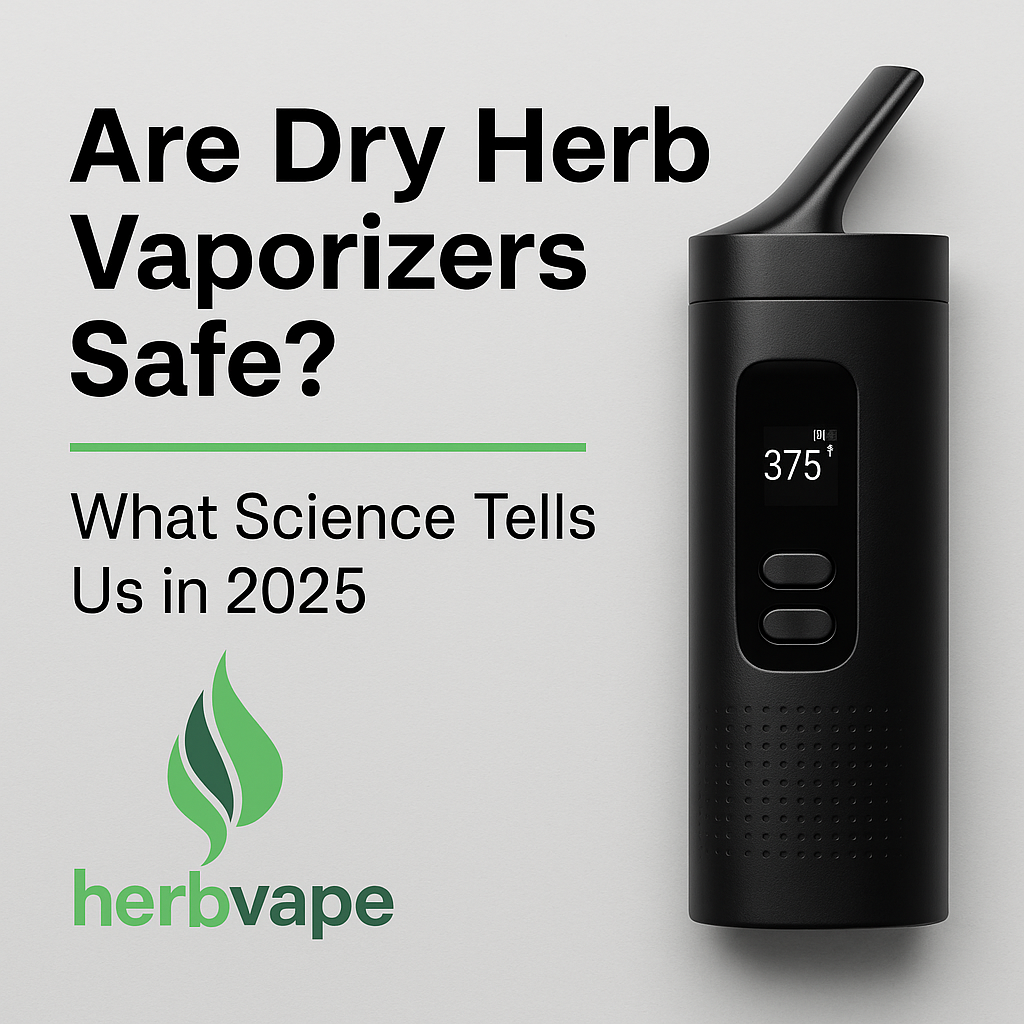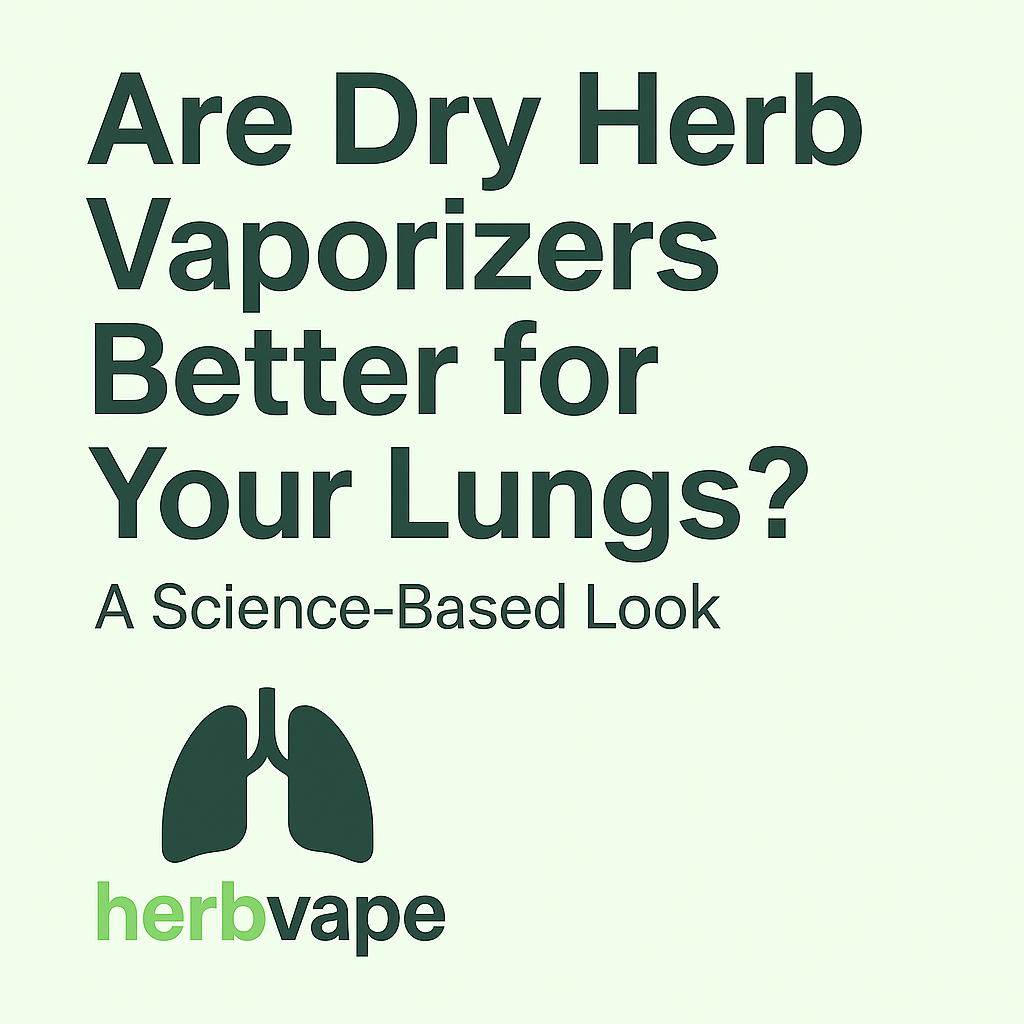When discussing dry herb vaporizers, understanding what vapor actually is becomes fundamental to appreciating how these devices work and why many users prefer them over traditional combustion methods. As a reviewer who has tested numerous vaporizers over the years, I've found that this knowledge helps users optimise their experience and make more informed decisions about their vaping equipment.
The Simple Answer: What is Vapor?
Vapor is the gaseous form of compounds extracted from your herb through controlled heating, without burning the plant material. When you use a dry herb vaporizer, the device heats your material to precise temperatures that release the desirable compounds (cannabinoids, terpenes, flavonoids) as a visible gas, whilst preserving the plant matter itself.
Think of it like steam from a kettle - water becomes vapor when heated to its boiling point, but the water itself doesn't burn or combust. Similarly, a quality vaporizer like the Arizer Solo 3 heats your herb just enough to extract the active compounds without destroying the plant material through combustion.
Vapor vs. Smoke: The Fundamental Difference
The distinction between vapor and smoke is crucial for understanding why vaporizers have gained such popularity amongst health-conscious users.
Smoke is produced through combustion, which occurs at much higher temperatures (typically above 450°F/232°C). When you burn plant material, you create smoke containing not only the desired compounds but also tar, carbon monoxide, and numerous potentially harmful byproducts from the combustion process.
Vapor, on the other hand, is created through vaporization - heating the material to temperatures between approximately 160°C-220°C (320°F-430°F). This process extracts the beneficial compounds without burning the plant matter, resulting in a cleaner, purer delivery method.
The difference is immediately noticeable: vapor is typically clearer, dissipates more quickly, has a cleaner taste, and doesn't leave the lingering smell associated with smoke.
The Science Behind Vaporization
Vaporization works on the principle that different compounds have different boiling points. When heated to their specific boiling point, these compounds transform from solid to gas without combustion occurring.
Temperature Ranges and Their Effects:
- Lower temperatures (160°C-177°C/320°F-350°F): Ideal for flavour preservation and terpene extraction. Vapor at these temperatures is often barely visible but delivers excellent taste and mild effects.
- Medium temperatures (177°C-200°C/350°F-390°F): The sweet spot for most users, offering balanced flavour and vapor production with good effects.
- Higher temperatures (200°C-220°C/390°F-430°F): Maximum extraction and denser vapor clouds, though with some reduction in flavour quality.
Devices like the Crafty+ excel in this temperature range, offering precise control that allows you to target specific compounds for your desired experience.
What Does Quality Vapor Look Like?
Having tested hundreds of sessions across dozens of vaporizers, I can identify several characteristics that define quality vapor:
Visual Characteristics
Quality vapor is visible but distinctly different from smoke. It appears as a thin, often translucent cloud that dissipates relatively quickly. At lower temperatures, vapor might be barely visible despite delivering potent effects - this is completely normal and doesn't indicate poor performance.
Flavour Profile
One of vapor's greatest advantages is flavour preservation. Quality vapor allows you to taste the complex terpene profiles of your herb - something that's largely destroyed through combustion. The Tinymight 2, with its all-glass vapor path, exemplifies this perfectly, delivering remarkably pure flavours.
Smoothness
Unlike smoke, good vapor should be smooth and easy on the throat and lungs. Quality vaporizers with effective cooling systems produce vapor that's comfortable to inhale, even at higher temperatures. The Mighty+ and Venty, for instance, incorporate sophisticated cooling units that deliver exceptionally smooth vapor.
Effects
The effects from vapor tend to be cleaner and more nuanced than those from smoking. Many users report experiencing the full spectrum of their herb's properties without the "heavy" feeling often associated with combustion.
Factors That Influence Vapor Quality
Understanding what affects vapor quality helps you optimise your vaping experience:
1. Heating Method
Conduction heating involves direct contact between your herb and a heated surface. Devices like the PAX Plus use this method, typically producing denser vapor more quickly but requiring careful technique to avoid hot spots.
Convection heating passes heated air through your material. This method, used in vaporizers like the Arizer Solo 3, generally provides superior flavour and more even extraction.
Hybrid systems combine both methods, as seen in the Mighty+ and Venty, often delivering the best of both worlds.
2. Temperature Precision
Accurate temperature control is crucial for quality vapor production. Devices offering 1°C incremental adjustments allow you to target specific compounds and customize your experience precisely.
3. Vapor Path Materials
The materials used in the vapor path significantly impact flavour. Glass vapor paths, as found in Arizer devices, provide the purest taste, whilst medical-grade plastics and ceramics also offer excellent performance when properly engineered.
4. Draw Technique
Most vaporizers perform best with slow, steady draws rather than quick, forceful pulls. Think "sipping hot tea" rather than "drinking through a straw." This ensures proper heat distribution and optimal extraction.
Health Considerations of Vapor
Whilst research suggests vaporizing is likely less harmful than smoking, several health factors merit consideration:
Temperature Safety
Lower temperatures (below 200°C/392°F) generally produce fewer potentially harmful compounds. All quality vaporizers offer precise temperature control to maintain safer operating ranges.
Material Quality
Reputable manufacturers use medical-grade materials in vapor paths to ensure no toxic compounds are released during heating. Devices like the Crafty+ and Mighty+ carry medical device certification in some regions.
Maintenance Importance
Regular cleaning prevents residue buildup that could affect vapor purity. Different devices have varying maintenance requirements, but keeping your vaporizer clean is essential for both performance and health reasons.
Optimising Your Vapor Experience
Based on extensive testing across numerous devices, here are proven techniques for achieving optimal vapor quality:
Temperature Stepping
Start at lower temperatures (around 175°C/350°F) to experience full flavour profiles, then gradually increase throughout your session. This technique maximises both taste and extraction efficiency.
Proper Material Preparation
Use a medium grind - not too fine (which can restrict airflow) and not too coarse (which leads to uneven heating). The consistency should be similar to coarse sea salt.
Correct Packing Technique
Pack your herb with the right density - "firm but fluffy" is the general rule. Too tight restricts airflow; too loose causes uneven heating.
Quality Input Equals Quality Output
The quality of your herb significantly impacts vapor quality. Well-cured, properly stored material with appropriate moisture content produces superior vapor to dry, old, or poorly cured herbs.
Understanding Vapor Across Different Vaporizer Types
Different vaporizer designs create distinctly different vapor experiences:
On-Demand Vaporizers
Devices like the Firefly 2+ heat only when you draw, providing instant vapor production and excellent efficiency for microdosing.
Session Vaporizers
Traditional session devices like the XMAX Starry 4 maintain temperature for extended periods, ideal for longer, more relaxed sessions.
Hybrid Systems
Premium devices like the Venty combine multiple heating methods to deliver both excellent flavour and substantial vapor production.
Common Vapor Misconceptions
"Thicker vapor means better performance" Not necessarily. Vapor density varies with temperature, material quality, and individual device characteristics. Some excellent vaporizers produce lighter vapor that's highly effective.
"You need to see vapor to know it's working" Many compounds vaporize at temperatures that produce minimal visible vapor whilst still delivering effects. This is particularly true at lower temperature settings.
"All vaporizers produce the same vapor" Different heating methods, materials, and designs significantly impact vapor characteristics. A budget device like the XMAX Starry 4 will produce different vapor than a premium unit like the Tinymight 2.
Choosing the Right Vaporizer for Your Vapor Preferences
Your vapor preferences should guide your vaporizer selection:
- For maximum flavour: Consider convection or hybrid devices with glass vapor paths like the Arizer Solo 3
- For dense vapor production: Hybrid devices like the Mighty+ or Venty excel
- For efficiency and microdosing: On-demand convection vaporizers like the Tinymight 2 are ideal
- For portability without compromising vapor quality: Compact devices like the Crafty+ or PAX Plus offer excellent solutions
Conclusion
Vapor is the gaseous extraction of beneficial compounds from your herb through controlled heating, without combustion. Unlike smoke, vapor preserves the full spectrum of flavours and compounds whilst potentially reducing harmful byproducts associated with burning plant material.
Understanding vapor - what it is, how it's created, and what affects its quality - is fundamental to appreciating the advantages of vaporization over combustion. Quality vapor offers cleaner flavours, smoother inhalation, and potentially fewer health risks compared to smoke.
Whether you prioritise flavour, efficiency, or portability, there's a vaporizer that can deliver the vapor quality you're seeking. The key is understanding your preferences and choosing a device engineered to meet those specific needs. From budget-friendly options like the XMAX Starry 4 to premium devices like the Venty, the right vaporizer can transform your relationship with vapor and elevate your entire experience.
By mastering the fundamentals of vapor production and optimisation techniques, you'll be well-equipped to enjoy the full benefits that quality vaporization has to offer.
















Leave a comment
This site is protected by hCaptcha and the hCaptcha Privacy Policy and Terms of Service apply.